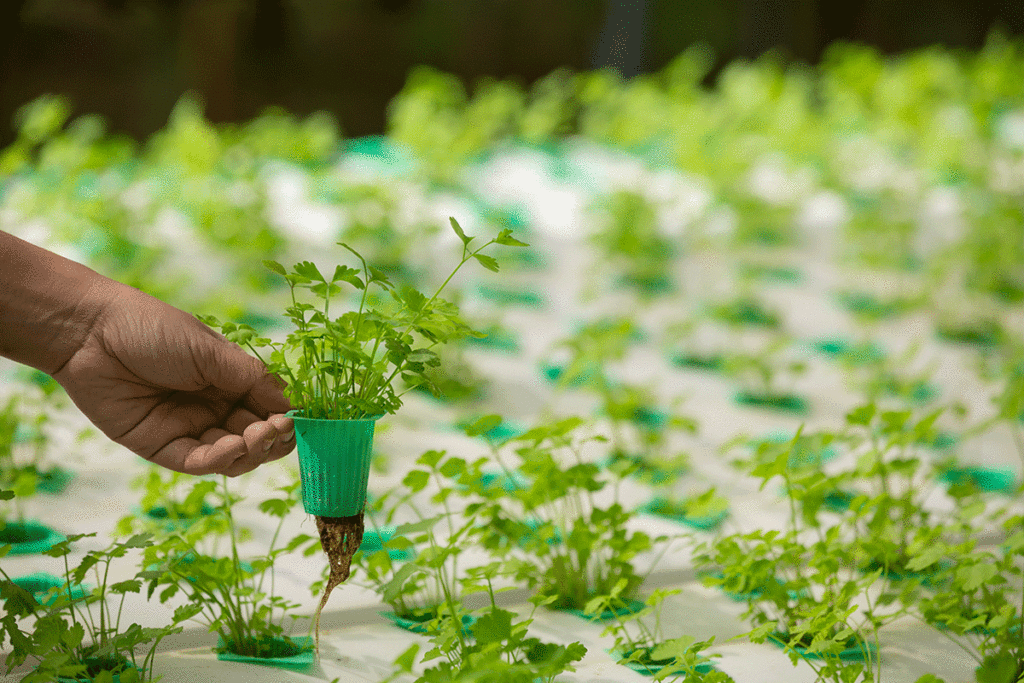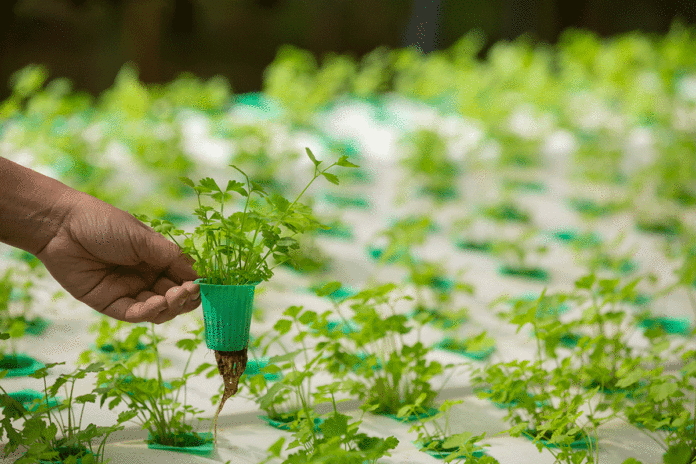Today, there are more than 570 million farms around the globe, and over half a century, the agricultural output has experienced three folds. With the introduction of modern equipment and automation systems in the 20th century, the number is increasing every day.
Last year, we saw many new technologies in agriculture. From drones to blockchains to vertical farming, every technology has helped farmers to take better care of their business. Here are some creative agricultural practices and technologies that are changing the entire world.
The Drones
We all are familiar with the problem of vanishing bees. Bees play a beneficial role in sustaining agricultural production since they act as pollinators.
As a result, drones are being used in modern agricultural practices in place of bees to carry out the traditional pollination process.
Drones also act as data-gathering devices when equipped with video cameras. They offer an “eye in the sky” view to check any plant pests and dry areas that need extra care. In some countries, farmers use drones to spray fertilizers and pesticides in their farms. It can also be outfitted with sensors to keep a check on the adequate amount of light the plants get.
BlockchainTechnology
Many of us are familiar with the applications of blockchain in cryptocurrency finance, but this application has more potentials in the agricultural world.
From farmer to wholesalers to grocery stores, blockchain coupled with Internet of Things is remodeling the food industry.
It keeps a track on various warehousing and distributions stages. It can record and update the status of the crops from cultivation to harvest, from inventory to delivery, etc. The status of all the plants is presented in real-time. Another application of blockchain is to keep a track record of maintenance of machines or tracing other sensory equipment.
Hydroponics Farming

Hydroponic farming is the practice of growing vegetables and plants in a tank filled with water without soil. Since it is a soil-free farming method, the problem of soil-borne pests is eliminated. In the containers, fish are also present to provide fertilization to the plants.
One of the brilliant things about hydroponic farming is you don’t need large spaces to grow plants, opposite to conventional agriculture.
With Hydroponic farming technology, you can increase production by four to ten times in the same area of space. Sometimes the production becomes double when the crops are grown in a well-managed hydroponic system. It is a safe farming practice that doesn’t require the use of harmful chemicals or pesticides.
Aeroponic Farming
Aeroponic farming is the process of growing plants by spraying nutrient-rich mixture to the roots of the crops. Farmers use irrigation equipment to spray the mixture on the crops. There is no medium, such as soil or water, is required to carry out aeroponic farming.
One of the biggest pros of the aeroponic system is that you don’t need a spacious area to install it. This type of farming requires considerably less time and energy to grow vegetables as compared to conventional agriculture.
Since it doesn’t need soil or water as a medium, less maintenance is required. Also, you can easily clean your aeroponic system and replace old crops with new ones. Moreover, this type of farming is an affordable way to improve the growth of plants, their survival rate and aging period, in contrast to traditional farming methods.
Modern Agriculture – Vertical Farms
Modern farming, indeed, has brought many significant advantages in agricultural practices. The urban farm can be as simple as your traditional, backyard community garden, or it can be very well-contained, well-regulated, and eco-friendly.
The very latest trend seen these days is vertical farming. According to reports, the yields of vertical farming are more efficient than those of conventional agriculture. There are approximately 2.2 million square feet of vertical farms operating around the world.
Since the population is increasing day by day, the need to use the space efficiently is rising. Luckily, vertical farming takes up less space but serves the purpose of a large space. The main aim of vertical farming is to conserve natural resources like land, water, and nutrients. To begin with, you can start growing leafy vegetables, tomatoes, and other herbs.
Artificial intelligence In Agriculture
Artificial intelligence has been popularly used in many industries whether it is the banking sector, medical sector, traveling industries or agriculture.
AI can be beneficial in improving crop productivity as it can easily detect plant diseases, pest damage, pH of the soil, dry areas, etc. with a 98% accuracy rate.
Furthermore, AI provides various data sources like precipitation level, temperature level, wind-speed, and sun radiations. It also helps in keeping track of old values of production and what can be the expected value of the output in the future. Today, Artificial intelligence has emerged into three sections – agricultural robotics, soil and plant monitoring, and predictive analysis. The sensors gather the soil samples and store them in the system that allows the farmers to have a better analysis of the soil strength.
CRISPR Gene Editing
CRISPR is an alternative method to transgenic engineering in which scientists change the genome of plants to get derived characteristics.
Today, several Food research centers are working on testing the ability of CRISPR to solve various f00d related issues for both farmers and consumers.
CRISPR gene editing has remodeled traditional agriculture in a number of ways. Now, farmers can grow less-gluten wheat and a mushroom that stays fresh for a long time. It also helps in producing soybeans with lesser unhealthy fats, the longer shelf life of potatoes, non-brown apples when sliced, and many other products.
Some experts have also claimed that within the next five to ten years, our generation will be consuming CRISPR-based foods only.
Wrapping Up
A couple of above mentioned innovative agricultural practices are some of the methods that are changing the face of our future. These creative ideas are making the world a more suitable place to live in. They are the keys to the survival of humanity. Without these innovative inventions, the drastic climate changes, the pests, the overpopulation, etc. can have a deteriorating effect on the growth of crops.

